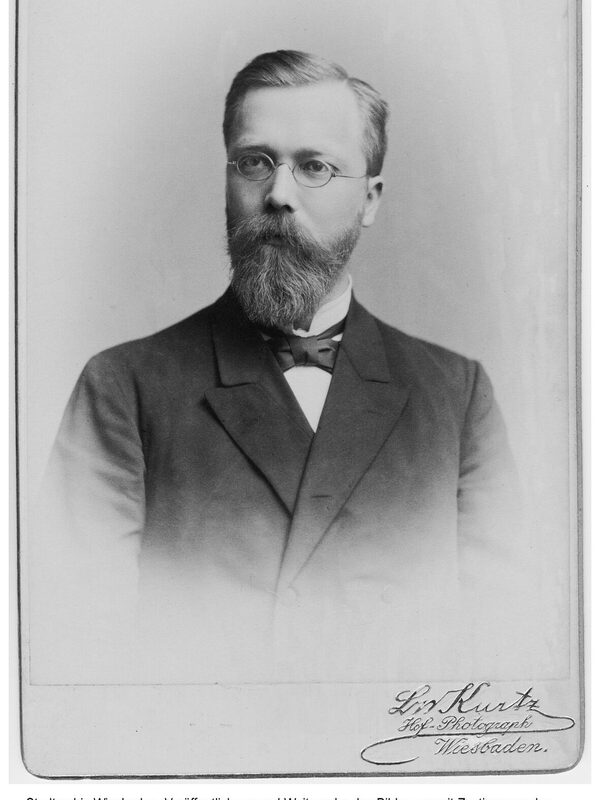Veesenmeyer, Emil
Veesenmeyer, Emil
Protestant pastor, regional church councilor
Born: 29.07.1857 in Stuttgart
Died: 08.03.1942 in Wiesbaden
After passing his theological exams in Mannheim in 1877/78, Veesenmeyer became a vicar in Schwetzingen and Mannheim and in 1881 a pastor in Holzen (Black Forest). In 1885 he was appointed to the Marktkirche and in 1892 as the first pastor at the Bergkirche, where he remained until his retirement in 1927. He was appointed honorary dean in 1918 and regional church councillor in 1925. In 1918, he received an honorary doctorate from the University of Marburg.
Veesenmeyer founded Wiesbaden's first parish hall. In 1921, he became chairman of the Nassau Gustav-Adolf Association. He became known far beyond the borders of Wiesbaden for his Wiesbaden program, which defined the basic form of a Protestant preaching church. As a freemason, Veesenmeyer belonged to the lodge "Plato zur beständigen Einheit" (Plato for Constant Unity), was Master of the Chair three times, and later Master of the Old Chair.
During the construction of the Ringkirche, he was responsible for decorating the room in the Reformers' Hall with portraits of reformers. He also had the statues of the two knights Wilhelm der Schweiger and Gustav Adolf of Sweden sculpted by the Frankfurt sculptor Ernst Rittweger (1869-1944) at the expense of the Grand Duke of Luxembourg Adolph zu Nassau and placed in front of the east portal of the Ringkirche. The equal selecAdolph zu Nassau and placed in front of the east portal of the Ringkirche. The equal selection of reformers (two Lutheran and two Reformed) makes it clear that Veesenmeyer's architectural model is committed to the union of Lutheran and Reformed denominations.
Literature
Müller, Wilhelm: Short history of the Nassau Gustav-Adolf Association, Wiesbaden 1931 [p. 36 f.].
Stange, Horst: Freemasons in Wiesbaden, Mainz-Kastel 2002 [p. 320 f.].
